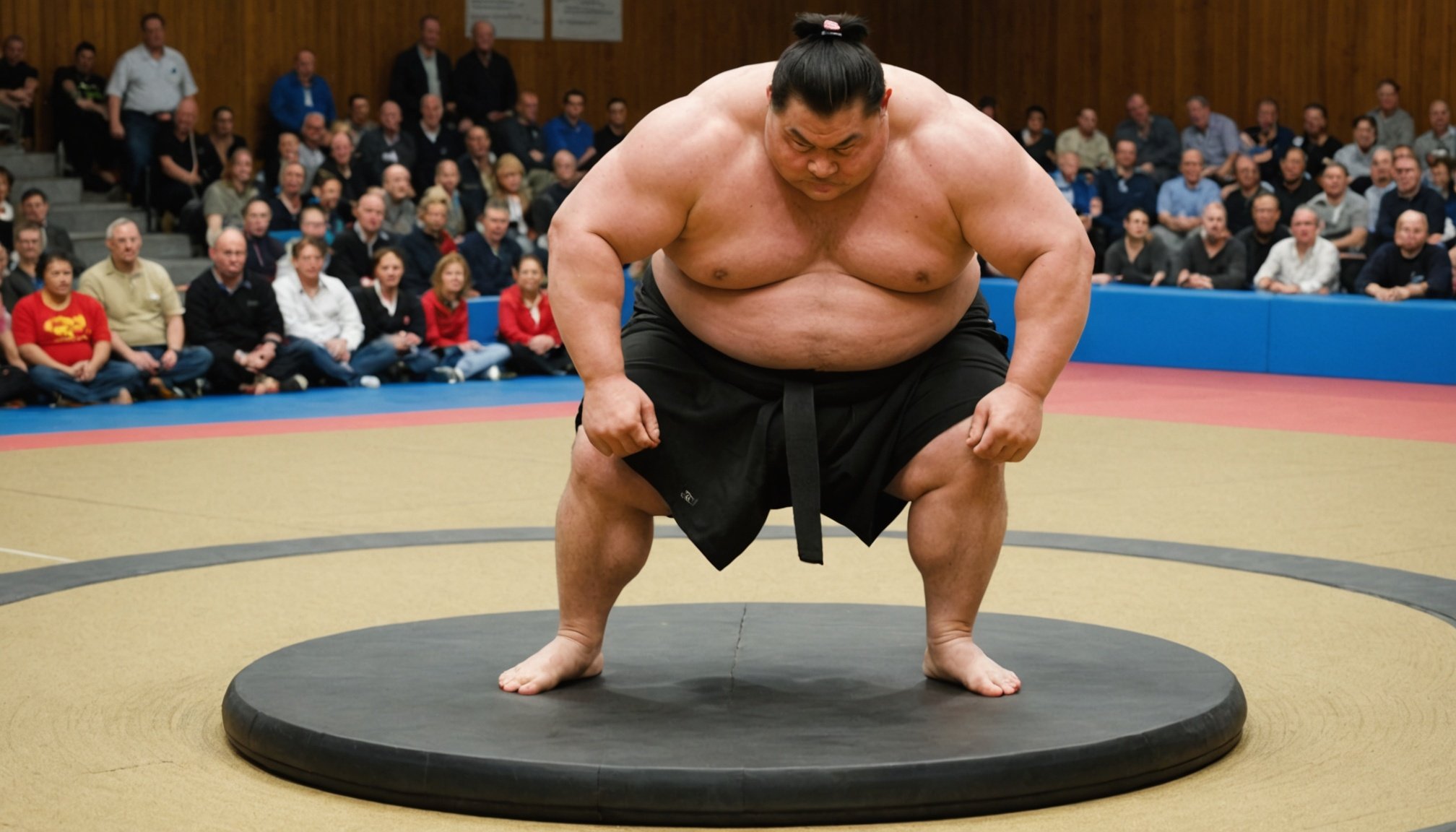Importance of Balance in Sumo Wrestling
Balance in sumo wrestling is paramount to achieving success in this ancient sport. The art of maintaining equilibrium helps wrestlers to withstand powerful pushes and execute strategic maneuvers effectively. Veteran sumo wrestlers consistently emphasise the significance of balance in matches. It is the foundation of stability, enabling wrestlers to maintain their stance against formidable opponents.
When comparing the approaches of sumo wrestling in the UK and traditional Japanese practices, there are intriguing differences in balance techniques. While Japanese sumo emphasises rooted stances and swift shifts, UK sumo may integrate modern insights into physiology and physics to perfect balance strategies.
Insights from seasoned wrestlers reveal that balance is not only about physical strength but also mental focus. Wrestlers often engage in meditative practices to hone their concentration, ensuring their mind is as stable as their body. Balance involves a harmonious blend of core strength, agility, and strategic foot positioning. For practitioners and fans alike, understanding the role of balance brings a deeper appreciation of the skill and discipline involved in sumo wrestling.
Essential Techniques for Enhancing Balance
Exploring the techniques for sumo wrestling balance reveals how vital stances and core strength are in mastering this skill. The process begins with understanding fundamental stances.
Additional reading : Transforming UK Combat Sports: Unveil Cutting-Edge Tech Innovations Powering Elite Training!
Fundamental Stances
Foot positioning is crucial for stability in sumo. Wrestlers must keenly be aware of how their feet are planted. This ensures they can effectively distribute their weight. Proper weight distribution is achieved by grounding the body through the centre of gravity. Drills such as the “Shiko” help in maintaining these stances. Practising these movements repeatedly aids in ingraining muscle memory critical for athletes.
Core Strength Development
Building core strength is inseparable from enhancing balance. Exercises like planks and Russian twists focus on solidifying core muscles. A robust core enables wrestlers to maintain rigidity against opponents’ forces. Effective training programs incorporate these exercises with increasing intensity, emphasising regular conditioning.
Dynamic Balance Training
Agility stands at the forefront of improving dynamic balance. Incorporating exercises like quick lateral shuffles can enhance a wrestler’s ability to transition smoothly between positions. Encouraging techniques for sumo wrestling balance, such as harnessing agility, not only refines movement but also boosts competitive performance. This underlines the strategy of blending stances and agility for optimal balance.
Specialized Exercises and Drills
Enhancing balance through targeted practices is crucial in sumo wrestling. Let’s delve into some essential sumo wrestling drills and exercises.
Static Balance Exercises
Static balance forms the bedrock of stability. Drills that enhance this aspect focus on body control during immobility. Using balance boards or wobble cushions helps improve proprioception and develop core stability. Techniques that extend time spent on one foot are particularly effective, emphasizing the need for muscle endurance and concentration. Consistently practising these exercises ensures wrestlers maintain their stance even against unbalancing forces.
Partner Drills for Balance
Working with partners, wrestlers engage in competitive balance drills. These mimic match scenarios, building the ability to maintain equilibrium under pressure. Exercises involving push and pull dynamics test stability while enhancing reflexes. Trust and feedback between partners are fundamental, fostering a supportive environment for growth. This collaborative approach promotes mutual improvement and mutual respect in training.
Incorporating Technology in Training
To further hone balance, technology offers invaluable insights. Video analysis enables self-assessment, identifying areas for improvement. Apps track progress, providing real-time feedback on balance enhancement. Workshops led by expert coaches often integrate technology, combining traditional drills with modern techniques for a holistic training experience.
Expert Insights and Testimonials
Gaining insights from sumo wrestling experts can greatly enhance one’s understanding of balance techniques. Veteran UK sumo coaches provide fascinating perspectives on typical balance challenges encountered by wrestlers. They highlight the importance of maintaining low and wide stances for optimal stability. One common strategy is emphasising the significance of keeping the centre of gravity aligned, essential for better body control.
Interviews with UK Sumo Coaches
Coaches suggest dedicating significant training time to mastering foot positioning and core strength. They advocate drills that simulate match conditions, reinforcing muscle memory. Such exercises are pivotal for trainees who aspire to increase their resilience against rivals. Success stories often cite the impact of balance-focused conditioning in triumphing over opponents.
Case Studies of Successful Wrestlers
Looking at successful UK wrestlers, the focus on balance techniques reveals their importance in training regimens. Testimonials frequently highlight the effectiveness of integrating both static and dynamic balance exercises. Wrestlers consistently champion the benefits of disciplined practice, underscoring the role these routines play in achieving superior balance.
Cultural Insights: Learning from Japan
Learning from Japanese practices, UK wrestlers incorporate traditional techniques to enhance their approach. This cultural exchange enriches their training philosophy, promoting skill development. By adapting these practices, UK wrestlers can refine their techniques, gaining a competitive edge.
